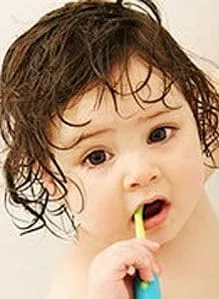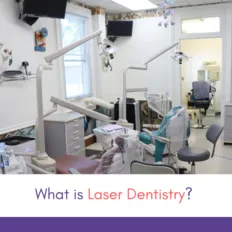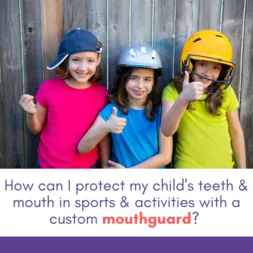- What is a Pediatric Dentist?
- Why are my child's primary teeth important?
- Eruption of your child's primary teeth
- Dental Radiographs (X-rays)
- What's the best toothpaste for my child?
- Laser Dentistry
- Children with Special Health Care Needs
- Perinatal & Infant Oral Health
- When will my child start getting teeth?
- Nursing/Baby Bottle Tooth Decay (Early Childhood Cavities)
- How do I best care for my child's teeth?
- How do I prevent my child from getting cavities?
- Seal Out Decay
- Fluoride
- Mouth Guards
- Xylitol - Reducing Cavities
- Beware of Sports Drinks
For more information concerning pediatric dentistry, please visit the website for the American Academy of Pediatric Dentistry.
GENERAL PEDIATRIC DENTAL TOPICS
WHAT IS A PEDIATRIC DENTIST?
Just like your child sees a pediatrician, they deserve the specialized care that pediatric dentists are educated and trained to deliver.
Infants, children, pre-teens, and teenagers all have different dental, physical, and emotional needs. Pediatric dentists meet those needs by giving your child exceptional dental treatment, and a comfortable age-appropriate experience.
All of your child's dental needs, from teaching them how to correctly take care of their teeth, fixing cavities, monitoring growth and development of their jaw and teeth, as well as determining the best time for your child to begin orthodontic treatment, are just some of the important aspects a pediatric dentist can provide for your child.
WHY ARE MY CHILD'S PRIMARY TEETH IMPORTANT?
It is very important to maintain your child's primary teeth with good oral hygiene at home, and with routine dental appointments. Your child's primary teeth - or baby teeth - are important to maintain for (1) proper chewing and eating, (2) providing space for the permanent teeth and guiding them into the correct position, and (3) permitting normal development of the jaw bones and muscles. Primary teeth also affect the development of speech. While the front 4 teeth last until 6-7 years of age, the back cuspids and molars aren’t replaced until age 10-13.
WHEN WILL MY BABY START TO GET TEETH?
You should see your child's first baby teeth starting to appear in the lower front (anterior) teeth, and they usually begin erupting between the
age of 6-8 months.
Your child's teeth will erupt as young as 4 months old. Your baby's teeth, the lower central incisors will erupt, followed closely by the upper central incisors. Although all 20 primary teeth usually appear by age 3, the pace and order of their eruption varies.
Permanent teeth begin appearing around age 6, starting with your child's first molars and lower central incisors. At age 8, you can generally expect to see their bottom 4 primary teeth (the lower central and lateral incisors) and their top 4 primary teeth (the upper central and lateral incisors) have been lost and permanent teeth have taken their place. There is a one to two-year break from ages 8-10, and then the rest of your child's permanent teeth will start to come in. This process will continue until your child is approximately 21 years old.
As your child becomes an adult, they will have 28 permanent teeth, or up to 32, including the third molars (called wisdom teeth).
DENTAL RADIOGRAPHS (X-RAYS)
Radiographs (X-Rays) are a vital and necessary part of your child’s dental diagnostic process. Without them, certain dental conditions can be overlooked.
When your child has X-Rays taken, it allows our team to diagnose and treat health conditions that we are unable to detect during your child's clinical examination. X-Rays can also detect more than cavities your child may be suffering from. For example, X-Rays may be needed to survey your child's erupting teeth, diagnose bone diseases, evaluate results of an injury, or plan orthodontic treatment.
The American Academy of Pediatric Dentistry (AAPD), Federal (FDI) World Dental Federation and the American Dental Association (ADA) recommend that your child should receive X-Rays and an examination every six months if they are at a higher risk for tooth decay. Minimally we recommend that your child receives X-Rays once a year to confirm that their oral health is on the right track. Approximately every 3 years, it is a good idea to obtain a complete set of X-Rays of your child's mouth, either a panoramic and bitewings or periapicals and bitewings.
Our dental family is particularly careful to minimize the exposure of your child to radiation during their X-Rays. With contemporary safeguards, the amount of radiation your child will receive in a dental X-ray examination is extremely small.
Today’s equipment filters out unnecessary x-rays and restricts the x-ray beam to the area of interest on your child. The most advanced digital dental X-Ray sensor and proper shielding assure that your child receives a minimal amount of radiation exposure.
WHAT'S THE BEST TOOTHPASTE FOR MY CHILD?
Tooth brushing is one of the most important tasks for good oral health. Many toothpastes and tooth polishes can damage your child's smile
with harsh abrasives, which can wear away their tooth enamel. When looking for toothpaste for your child, make sure to pick one that is recommended by the American Dental Association (ADA), as shown on the box or tube. These toothpastes have undergone testing to ensure they are safe for your child to use.
Use only a smear of toothpaste (the size of a dry grain of rice) on your child's toothbrush, as well as brushing their teeth if your child is under 5 years of age. If your child is 5 to 6 years old, you should use a pea-sized amount of toothpaste, and perform or assist your child's toothbrushing.
Remember that if you have a younger child, they do not have the ability to brush their teeth effectively on their own, and should have your assistance. Finally, be sure that your child does not swallow excess toothpaste after brushing, and that they rinse their mouths thoroughly after.
Avoid tartar control toothpaste as they can cause sensitivity. We recommend plain, child-flavored varieties of Crest or Colgate toothpaste.
LASER DENTISTRY
A dental laser generates a beam of concentrated light. The beam of light brings energy into your child's mouth to help us remove areas of tooth decay and infection with precision and accuracy. The laser beam sterilizes the affected area and seals off their blood vessels, which minimizes the chance of your child having an infection and/or bleeding. Your child will be able to experience a much more gentle approach to specific oral procedures when they are able to be treated with laser dentistry.
We are one of the first pediatric dental offices in Pennsylvania to utilize dental lasers for our patients. Our office uses the Biolase Waterlase MD. We believe dental lasers are the future of dentistry when it comes to keeping your child's oral health as pain-free and healthy in the most minimally invasive way.
Advantages of Laser Dentistry for your child include:
- Reduced or no local anesthesia ("numb or sleeping" mouth)
- Reduced bleeding
- Reduced postoperative discomfort
- Reduced chance of post-operative infection
- Improved bonding process
Dental Laser Procedures your child could have include:
- Removal of dental decay (cavities)
- Desensitize sensitive teeth
- Reshape "gummy smiles"
- Frenectomy (frenulumectomy)
- Soft tissue biopsies
- Tooth preparation
- Oral ulcer treatment
- Old composite filling removal
- Tied Tongue repair
CHILDREN WITH SPECIAL HEALTH CARE NEEDS
Your child's specific health care needs will be our utmost priority during their dental visit, because our practice values that your child needs a dental practice that is open and understanding. Your child will love that they have found a dental family who will listen, adapt, and care for their specific health needs during the visit.
Listening. Because you know your child better than anyone else, each visit begins with our team listening to the needs of your child. By listening to you, as well as the child, and patiently answering questions, we are able to work together in providing the best possible care for your child. Your child will feel at ease having a dentist who genuinely will listen to them to make their experience fun and stress free!
Adapting. However big or small your child's specific needs may be, your child will always feel happy and safe during their treatments, because we understand that always being adaptable for them, instead of vice versa, will continue to build their trust and comfort levels during each visit they have. We understand that no two children are the same, which is why we adapt our care to be effective for your child's specific needs.
Caring. Your child will feel at ease and excited about their oral health, because our dental staff family has gained the necessary expertise to care for children with special health care needs. We help them learn that their oral health and visiting the dentist is fun!
PROCEDURES
SEDATION
Some dental procedures your child may need to have may include sedation as part of the procedure. There are two types of sedation your child may require for a dental procedure, and it is based on the type of oral procedure they are required to have. Below you will find a more in-depth understanding as to why each sedation type is used and what to expect for your child.
Nitrous Oxide
Laughing gas helps your child relax for their dental procedure. Nitrous oxide/oxygen is a blend of two gases, oxygen and nitrous oxide. Nitrous oxide/oxygen is given through a small breathing mask which is placed over your child's nose, allowing them to relax without putting them to sleep. The American Academy of Pediatric Dentistry recognizes this technique as a very safe, effective technique for treating your child's needs. The gas is mild, easily taken and it is quickly eliminated from their body, as well as being non-addictive. While inhaling nitrous oxide/oxygen, your child remains fully conscious and maintains all of their natural reflexes.
Prior to your child's appointment:
- Please inform us of any change to your child's health and/or medical condition.
- Tell us about any respiratory condition that makes breathing through their nose difficult for your child. It may limit the effectiveness of the nitrous oxide/oxygen.
- Let us know if your child is taking any medication on the day of the appointment.
POST-OPERATIVE CARE
Your child's oral health is our priority. From well visits to operative procedures, our team of professionals will be there every step of the way during every stage of your child's oral health. If your child ever needs a procedure, we make sure we put their needs first to make the procedure and environment as fun and relaxing as possible. After their procedure is completed they will be awesomely rewarded for the wonderful job they did, to help reinforce that the procedure was just as easy as getting a cleaning, but with awesome prizes! For you, we will review all of their post-operative care instructions, as well as a follow-up call the same day, and a well visit if deemed necessary, all to make sure your child is continuing to heal perfectly. Some of our post-operative care instructions are listed below. We do tailor care plans per specific needs of your child.
AFTER LOCAL ANESTHETIC
- If the procedure was in your child's lower jaw, then their tongue, teeth, lip, and surrounding tissue will be numb or asleep for up to 3 hours.
- If the procedure was in your child's upper jaw, then their teeth, lip, and surrounding tissue will be numb or asleep for up to 3 hours.
- Your child may not understand the effects of local anesthesia and may chew, scratch, suck or play with the numb area. Though these actions may are common, they can also cause minor irritations to the numbed area on your child, or they can be severe enough to cause swelling and abrasions to their tissue.
- Monitor your child closely for 2 hours following their procedure. Your child will find the most comfort being on a liquid or soft foods diet until the anesthetic has worn off.
- Please do not hesitate to call our office at 610.409.1940 if you have any questions.
After Trauma
- Keep your child's traumatized area as clean as possible. A soft washcloth often works well to aid with their healing process.
- Watch for darkening of their traumatized teeth as this could be an indication of a dying nerve (pulp).
- If they have swelling that lasts longer than 48 hours, our office needs to see your child as soon as possible.
- Your child should maintain a soft diet for two or three days, or until they feel comfortable to eat normally again.
- If an antibiotic or pain medicine is prescribed for your child, be sure to follow the prescription as directed.
- Please do not hesitate to call our office at 610.409.1940 if you have any questions.
CARING FOR EXTRACTIONS
- Do not let your child scratch, chew, suck or rub their lips, tongue, or cheek while they feel numb or asleep. Your child should be watched closely so they do not injure the affected area before the anesthesia wears off.
- Your child not rinse their mouth for two days.
- Keep your child from spitting.
- Your child should not drink a carbonated beverage for the remainder of the day.
- Do not let your child drink through a straw.
- Keep your child's fingers and their tongue away from the extraction area.
Bleeding
- Your child may experience some bleeding, which is completely normal. If you notice unusual or sustained bleeding occurs, place a cotton gauze firmly over their extraction area, and have them bite down, or hold in place for fifteen minutes. Repeat if necessary.
- Your child should maintain a soft diet for two or three days, or until they feel comfortable to eat normally again.
- Your child should avoid strenuous exercise or physical activity for several hours after their extraction.
Pain or Discomfort
If your child is experiencing discomfort, we recommend you use Children's Tylenol, Advil or Mortin, as directed for the age of the child. If a medicine was prescribed for your child, then follow the directions on the prescription.
Does your child have oral discomfort after their dental cleaning? When your child receives a thorough cleaning, they may have bleeding, tenderness or discomfort. If your child has tender and inflamed gums after their cleaning it is most commonly due to underlying bacteria, plaque and tartar build-up. However, should you or your child have concerns during or after their oral care appointment, do not hesitate to consult with the doctor.
For 2-3 days after your child's cleaning we recommend the following:
- Warm sale water rinse 2-3 times per day. To make a saltwater rinse use 1 teaspoon of salt in 1 cup of warm water.
- For discomfort use Children's Tylenol, Advil or Motrin as directed.
CARING FOR SEALANTS
Sealants keep out plague and food and decrease the risk of decay by forming a thin covering over the pits and fissures in your child's mouth. Since the covering is only over the biting surface of your child's tooth, areas on the site and in between their teeth cannot be coated with the sealant.
To avoid your child fracturing their sealant, your child should refrain from eating ice or hard candy. Regular dental appointments are recommended in order for us to ensure that your child's sealants remain in place. When properly applied and maintained, they can successfully protect the chewing surfaces of your child's teeth.
A total cavity prevention program includes regular visits to our dental office, the use of fluoride, daily brushing and flossing, and limiting your child's intake of sugar-rich foods. If these measures are followed, and sealants are used on your child's teeth, the risk of decay can be reduced, or may even be eliminated.
EARLY INFANT ORAL CARE
PERINATAL & INFANT ORAL HEALTH
Are you an expecting mother? Did you know that your oral health can affect your pregnancy?
Research has shown evidence that expecting mothers with periodontal disease can have an increased risk of preterm birth and low birth weight. Your doctor and dentist here are here to assist you in the best ways to prevent periodontal disease during your pregnancy.
In addition to periodontal disease affecting your pregnancy, your oral bacteria can be passed on to your child too if proper oral health is not implemented.
To help decrease the risk of spreading oral bacteria on to your child:
- Visit your dentist regularly.
- Brush and floss on a daily basis to reduce bacterial plaque.
- Maintain a proper diet, and reduce beverages and foods high in sugar & starch.
- Use a fluoridated toothpaste recommended by the ADA and rinse every night with an alcohol-free, over-the-counter mouth rinse with .05 % sodium fluoride in order to reduce plaque levels.
- Do not share utensils, cups or food which can transmit cavity-causing bacteria to your children.
- Use of xylitol chewing gum - 4 pieces per day by the mother - can decrease a child’s odds of getting cavities.
WHEN WILL MY BABY START TO GET TEETH?
Teething, the process of baby (primary) teeth coming through the gums into the mouth, varies among individual infants. Some infants get their teeth early and some get them late. In general, your infant's first baby teeth that appear are usually the lower front (anterior) teeth and they usually begin erupting between the age of 6-8 months. See "Eruption of your child’s teeth" for more details.
NURSING/BABY BOTTLE TOOTH DECAY (EARLY CHILDHOOD CAVITIES)
Healthy oral care starts when your child is an infant. These simple steps will help protect them.
Once your child has teeth, and they fall asleep nursing or with a baby bottle in their mouth, with a non-water substance, milk and/or sweet liquid pools around your child's teeth giving plaque bacteria an opportunity to produce acids that attack their tooth enamel, resulting in baby bottle/nursing tooth decay.
To help prevent cavities, we recommend after each feeding you should wipe your infant's gums and teeth with a damp washcloth or gauze pad to remove any potential plaque. Liquids to be aware of that can lead to nursing/baby bottle tooth decay are milk (including breast milk), formula, fruit juice, and other sweetened drinks.
These two simple steps will help prevent nursing/baby bottle tooth decay for your child over 6 months old:
- Avoid letting your child fall asleep with a bottle that contains a non-water substance.
- Wipe your child's mouth after each feeding with a damp washcloth or gauze pad.
If you have any concerns and/or questions regarding your child's oral health, never hesitate to contact us at 610.409.1940.
PREVENTION
HOW DO I BEST CARE FOR MY CHILD'S TEETH?
You are your child's oral advocate, from maintaining your own good oral health while being pregnant until they are able to maintain oral health on their own. To help you maintain the best oral health for your child, in between dental visits, we recommend these tips:
Brushing Tips:
- Starting at birth, clean your child's gums with a soft cloth and water.
- As soon as your child's teeth erupt, brush them with a soft-bristled toothbrush.
- If your child is under age 3, use a grain of rice-size of toothpaste.
- If your child is 4-5 years old, use a pea-sized amount of toothpaste.
- Be sure to use an ADA-accepted fluoride toothpaste and make sure your child does not swallow the toothpaste.
- You should brush your child's teeth until they are old enough to do a thorough job on their own.
Flossing Tips:
- Flossing removes plaque between teeth and under your child’s gum-line where their toothbrush can't reach.
- Flossing should begin once your child has any two teeth that touch.
- Be sure and floss your child's teeth daily until they are able to do so on their own.
HOW DO I PREVENT MY CHILD FROM GETTING CAVITIES?
The first defense in preventing your child from getting a cavitie(s) is good oral hygiene to remove bacteria and the leftover food particles that combine to create cavities.
If your child is an infant, use a wet gauze or clean washcloth to wipe the plaque from their teeth and gums, helping prevent cavities. Avoid actions that can cause them to have nursing/baby bottle tooth decay. See "Nursing/Baby Bottle Tooth Decay" for more information.
If you have an older child, they should brush their teeth at least twice a day for two minutes at a time.
We may also recommend protective sealants or home fluoride treatments for your child. Sealants can be applied to your child’s molars to prevent decay on hard-to- clean surfaces.
Visting us every six months, beginning at your child's first birthday will start your child on a lifetime of good dental health.
SEAL OUT DECAY
A sealant is a protective coating that is applied to the chewing surfaces (grooves) of the back teeth (premolars and molars), where four out of five cavities in children are found. Sealant acts as a barrier to food, plaque and acid, thus protecting the decay-prone areas of the teeth.
The chewing surface grooves are more narrow than the bristles of a toothbrush, so they cannot get into them to clean the tooth or gumline. This is why, for many children, sealants are an excellent treatment option.
FLUORIDE
Fluoride is an element, which has been shown to be beneficial to teeth. However, too little or too much fluoride can be detrimental to the teeth. Little or no fluoride will not strengthen the teeth to help them resist cavities. Excessive fluoride ingestion by preschool-aged children can lead to dental fluorosis, which is a chalky white to even brown discoloration of the permanent teeth.
Many children often get more fluoride than their parents realize. Being aware of a child’s potential sources of fluoride can help parents prevent the possibility of dental fluorosis.
Some of these sources are:
- Too much fluoridated toothpaste at an early age.
- The inappropriate use of fluoride supplements.
- Hidden sources of fluoride in the child’s diet.
Two and three year olds may not be able to spit out fluoride-containing toothpaste when brushing. As a result, these youngsters may ingest an excessive amount of fluoride during tooth brushing.
Excessive and inappropriate intake of fluoride supplements may also contribute to fluorosis. Fluoride drops and tablets, as well as fluoride fortified vitamins should not be given to infants younger than six months of age. After that time, fluoride supplements should only be given to children after all of the sources of ingested fluoride have been accounted for and upon the recommendation of your pediatrician or pediatric dentist.
Certain foods contain high levels of fluoride, especially powdered concentrate infant formula, soy-based infant formula, infant dry cereals, creamed spinach, and infant chicken products. Please read the label or contact the manufacturer. Some beverages also contain high levels of fluoride, especially decaffeinated teas, white grape juices, and juice drinks manufactured in fluoridated cities.
Parents can take the following steps to decrease the risk of fluorosis in their children’s teeth:
- Use baby tooth cleanser on the toothbrush of the very young child.
- Place only a pea-sized drop of children’s toothpaste on the brush when brushing.
- Account for all of the sources of ingested fluoride before requesting fluoride supplements from your child’s physician or pediatric dentist.
- Avoid giving any fluoride-containing supplements to infants until they are at least 6 months old.
- Obtain fluoride level test results for your drinking water before giving fluoride supplements to your child (check with local water utilities).
MOUTH GUARDS
When a child begins to participate in recreational activities and organized sports, injuries can occur. A properly fitted mouthguard, or mouth protector, is an important piece of athletic gear that can help protect your child’s smile, and should be used during any activity that could result in a blow to the face or mouth. Mouthguards help prevent broken teeth, and injuries to the lips, tongue, face or jaw. A properly fitted mouth guard will stay in place while your child is wearing it, making it easy for them to talk and breathe. We fabricate custom mouth guards for your child so you can be reassured their smile is safe during their activities and sports.
XYLITOL - REDUCING CAVITIES
The American Academy of Pediatric Dentistry (AAPD) recognizes the benefits of xylitol on the oral health of infants, children, adolescents, and persons with special health care needs.
The use of XYLITOL GUM by mothers (2-3 times per day) starting 3 months after delivery and until the child was 2 years old, has proven to reduce cavities up to 70% by the time the child was 5 years old.
Xylitol is widely distributed throughout nature in small amounts. Some of the best sources are fruits, berries, mushrooms, lettuce, hardwoods, and corn cobs. One cup of raspberries contains less than one gram of xylitol.
Studies suggest xylitol intake that consistently produces positive results ranged from 4-20 grams per day, divided into 3-7 consumption periods. Higher results did not result in greater reduction and may lead to diminishing results. Similarly, consumption frequency of less than 3 times per day showed no effect.
To find gum or other products containing xylitol, try visiting your local health food store or search the Internet to find products containing 100% xylitol.
BEWARE OF SPORTS DRINKS
Due to the high sugar content and acids in sports drinks, they have erosive potential and the ability to dissolve even fluoride-rich enamel, which can lead to cavities.
To minimize dental problems, children should avoid sports drinks and hydrate with water before, during and after sports. Be sure to talk to your pediatric dentist before using sports drinks.
If sports drinks are consumed:
- Reduce the frequency and contact time
- Swallow immediately and do not swish them around the mouth
- Neutralize the effect of sports drinks by alternating sips of water with the drink
- Rinse mouthguards only in water
- Seek out dentally friendly sports drinks




